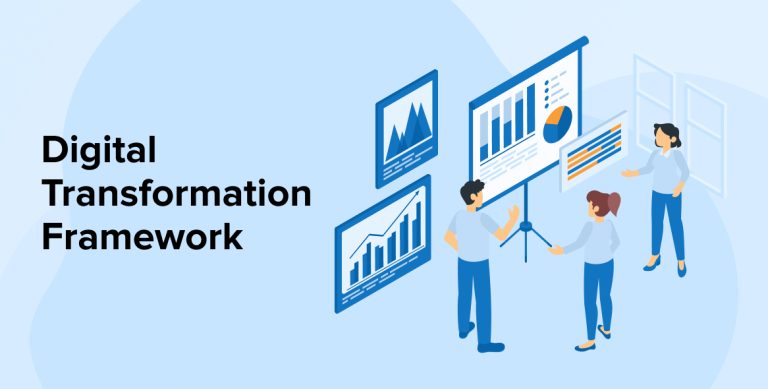
Digitalization has already transformed customers, platforms, and businesses, indicating that a digital revolution is in progress. Surrounded by an innovative culture free from constraint, businesses must make decisions to evolve; otherwise, they risk disappearing. The term “digital transformation” refers to more than just changes in technology. There are many aspects to the digital transformation framework so we should understand everything in detail.
1. What is a Digital Transformation Framework?
A digital transformation framework is a set of rules and a long-term strategy that companies use to lead them across the demanding areas of digital transformation. Finance software development companies utilize this framework to learn how to improve their current situation and maintain a competitive edge over their rivals.
Using the newest technology, digital transformation seeks to improve present processes and offer new, upgraded solutions and services. By transforming how a company operates and delivers value to its clients, digital transformation creates value.
Along with a shift in company culture, digital transformation requires companies to constantly experiment, challenge conventional thinking, and embrace occasional failure. It offers a shared reference point that can be developed as the company grows; so, the framework for the digital transformation is essential for success. The framework helps companies of all kinds to develop and succeed in the fast-changing environment of today using the strategy and roadmap.
Further Reading on: Enterprise Digital Transformation
Digital Transformation in Banking
2. Benefits of Digital Transformation Framework
A digital transformation process is essential for companies today. It offers a road map for navigating the changes brought about by new technology. Any external factors that might affect regular company operations are considered disruptions. With a consistent business strategy provided by the digital transformation framework, management, and staff will remain on track with their objectives among changing fintech trends.
Let’s analyze how a digital transformation framework can support companies going through disruptive events:
2.1 Outperforming Rivals
Maintaining competitiveness requires embracing new technologies and changing organizational procedures. A good digital transformation framework maintains your business ahead of the competition.
2.2 Improved Employee Productivity
By encouraging the adoption of automation and teamwork technologies, frameworks help to streamline processes and reduce manual labor. This frees up staff members’ time to concentrate on more valuable tasks, therefore raising general output and work satisfaction.
2.3 Operational Accuracy
Often part of digital transformation is simplifying procedures and minimizing inefficiencies. A well-designed framework identifies areas where digital technologies can automate tasks, reduce errors, and enhance productivity.
2.4 Innovation and Agility
A strong foundation promotes agility and innovative thinking. It motivates companies to stay ahead of industry trends, explore new technologies, and quickly adapt to changes in consumer or market behavior.
Training and development are crucial for ensuring that staff members have the tools they need to thrive in the digital environment, frameworks also show their relevance. This develops an innovative culture and empowers staff members.
2.5 Guarantuating Flawless Communication
Good teamwork and communication are needed for every staff member to work toward a shared objective. It is critical to form diverse teams, share knowledge, establish trust, and encourage open communication. Many tools can help with this process.
2.6 Encouraging Strategic Decision-Making
Digital transformation depends heavily on data. The structure enables companies to make data-driven decisions regarding their digital initiatives, therefore guiding the development of appropriate corporate plans.
2.7 Improving Consumer Interaction
Digital transformation presents several paths for improved consumer interaction. Whether by live chats, email, mobile applications, or social media, it lets you reach consumers where they feel most comfortable.
2.8 Risk Control
Whether one is using new technology or changing existing procedures, change carries some risk. Strong foundations enable early identification of possible hazards and the development of plans to reduce them, therefore guaranteeing more effective changes.
3. Things to Consider for Digital Transformation Framework
Any company striving to remain competitive in today’s corporate landscape needs a digital transformation plan. Still, what are the main elements of a decent digital transformation plan? There is no one-size-fits-all solution to this issue as the particular requirements of the company will affect the characteristics of a strong digital transformation framework. Still, several elements are essential for a successful digital transformation plan. Any company should take into consideration the following elements to start a digital transformation:
3.1 A Special Digital Transformation Team
Given the significant effort involved in digital transformation, it is advisable to have a staff committed to these tasks. Acting as a cross-functional group, this team guides the business through the digital transformation process and implements new operational models. One could locate the transformation team outsourced or derived from inside staff.
3.2 Specify Definite Objectives for the Transformation Strategy
Before starting a transformation plan, stakeholders must be clear about their desired outcome. Including every employee in the goal-setting process for the change is also crucial. After the objectives have been established, one should create a strategy for their accomplishment. This strategy should be based on a thorough analysis of the organization’s resources and capacity.
3.3 Clearly Defined Technology Needs
Any digital transformation (DX) framework has to list the technical specifications needed to reach the transformation targets. This includes choosing the correct digital tools, platforms, and systems to fit the corporate goals.
3.4 Process Improvement
A good DX framework should concentrate on using digital technology to enhance business processes and corporate operations. This may involve improving data analytics capability enhancement, automating labor-intensive operations, or simplifying communication channels.
3.5 Prospective Growth
Examining development prospects can help identify new revenue sources. Exploring development prospects helps businesses ensure they are maximizing their income potential in the digital age.
3.6 A Timesheet and Roadmap
One should develop a road plan with key performance indicators (KPIs). This will help keep track of how the transformation is going and make sure it stays on plan.
3.7 Create a Customer Satisfaction Plan
Two key factors drive companies’ digital transformation: to increase customer retention and expansion and to simplify operations into a more cost-effective entity. Companies should boost their online and mobile presence to create closer client relations and generate valuable feedback.
3.8 Provide a Detailed Road Map for Changing the Corporate Environment
Large-scale projects need management. Create a very thorough strategy illustrating how suitable software or other technological solutions might help to achieve customer interactions and corporate processes.
3.9 Risk Management
Another essential quality of a DX system is the identification of possible hazards and the development of plans to reduce them. This ensures a smooth and effective transformation journey.
3.10 Measurement and Analysis
Finally, the structure should provide metrics and key performance indicators (KPIs) to assess the effectiveness of projects aiming at digital transformation. Regular monitoring of these indicators helps to ensure informed decision-making and continuous improvement.
4. Digital Transformation Frameworks by Top-Leading Organizations
Navigating the change asks for a calculated strategy using tested techniques. The following presents various distinctive approaches from top consulting companies in the field that may assist companies on this journey.
4.1 Mckinsey
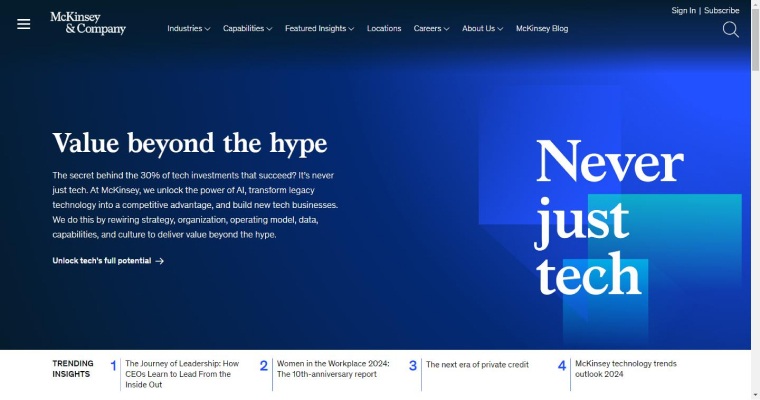
Renowned consulting company McKinsey has created a thorough and exclusive framework meant to help companies navigate the 4Ds of digital transformation. These 4Ds are discovery, design, delivery, and de-risk. However, McKinsey has now changed this structure to collect data, design, and distribution, stressing the important components supporting effective digital transformation projects.
Moreover, McKinsey offers a robust plan called the six building blocks for creating a high-performance digital enterprise. This strategic framework gives leaders a well-organized basis from which to handle significant digital changes.
The six building blocks of strategy and innovation, customer decision journey, finance process automation, organizational alignment, effective technology use, and data and analytics potential harnessing cover essential elements.
By emphasizing these fundamental building blocks, companies can navigate the complexities of digital transformation and achieve significant operational and strategic improvements.
4.2 Cisco

Success in the modern company environment depends on digitalization. Leading IT company Cisco has digitized its supply chain, office, services, and security to revolutionize all around.
- They have established an activity-based atmosphere in the workplace and provided staff members with IoT tools and collaborative technologies. Employee satisfaction and involvement have so risen by 17%.
- Cisco digitally linked several vendors and partners in their supply chain, hence strengthening cooperation to enhance delivery cycles. Productivity has risen by 35%.
- In their services, they linked their support offerings with virtual spark rooms allowing clients to work together. These creative innovations have helped Cisco to achieve increased profitability and efficiency.
- With instruments that offer traffic network management and threat analytics, they are preventing approximately 4.5 billion attacks daily. This has let them give their clients great services and maintain a safe and secure workplace.
Cisco’s make-over has been successful overall, and they are positioned for ongoing success going forward.
4.3 Ernst & Young (EY)

According to Ernst & Young (EY), digital transformation involves having a clear goal and plan, changing how customers interact with a business, using data analytics, and introducing new technologies. EY emphasizes good change management as well as matching digital capabilities with strategic objectives.
Although all of these models present a different angle on digital transformation, they all emphasize the need for a well-defined plan, a customer-oriented approach, modern technologies, and a culture ready for change.
4.4 Accenture

Accenture has been progressively digitizing every division of the company. This is their plan to make their new business models more effective, creative, and unique:
- The firm has started digitizing its hand-crafted procedures.
- Employees are free to decide when, where, and how they work.
- Client relationship management has seen reinventions.
- Additional effective teamwork is accomplished with additional tools for collaboration.
- The firm has been working worldwide connected using purposeful social involvement.
- They provide several avenues for better teamwork.
- Technology has helped them to align HR needs with digital skills availability.
- They have also brought scalable cloud use and carrier-grade worldwide networks.
5. How to Choose the Right Digital Transformation Framework?
The success of your digital transformation journey largely depends on the strategic choice you make regarding your digital strategy and the appropriate digital transformation (DX) framework for your company.
This method starts with precisely stating your company goals for the digital transformation project. Knowing these aims can help you develop a framework that best fits your objectives, whether your purpose is to increase operational efficiency, enhance the customer experience, or open new market prospects.
The second phase consists of a thorough evaluation of your company’s present degree of digital maturity. Examining your current technological setup, procedures, personnel, and culture will help you to find areas needing improvement. This assessment ensures that the selected framework efficiently addresses these gaps and drives you toward your objectives related to digital transformation.
It is equally crucial to consider the values of your organization. The DX structure should reflect the ideals and values of your company. For example, if your company depends on agility and creativity, a flexible and iterative DX framework would probably be a fit.
At this stage, one should explore the specifics of several DX frameworks. Each has special capabilities and areas of concentration; some are more technologically focused while others give customer experience or process improvement top priority. Analyzing these models against your objectives, present situation, and corporate culture helps you to spot possible fits.
Don’t hesitate to seek professional help during this procedure. Speaking with professionals in digital transformation or seasoned colleagues in your field of business will offer insightful analysis and direction. Their stories can guide you away from typical mistakes and make informed decisions.
Note that corporate demands are dynamic as is the digital ecosphere. The selected structure should so provide scalability and adaptability. It should let your company adapt to the times and as your digital competence develops.
Finally, before a full-scale implementation, think about operating the chosen framework on a small scale. This approach lets you make required changes, analyze its performance, and guarantee that it is the best match for your company.
6. Mistakes To Avoid When Creating A Digital Transformation Framework
To avoid missing out on real digital value, here are the most common mistakes people make when they try to change their business that you should consider:
6.1 Lack of IT Skills
A lack of IT knowledge or competence can significantly slow the path of digital transformation and compromise the company with mismatched digital strategies.
For a successful digital transformation, companies have to develop the correct skills, tools, and capacity. Still, the abilities needed to support transformation will most likely not be found inside the company. Businesses must seek out digital transformation consultants to access the necessary expertise and meet their ambitious digital agenda.
6.2 Setting Up Unrealistic Goals and Expectations
Like every aspect of business, you must have a strategy before beginning your journey to digital transformation. What do you aim to achieve? Are you looking to boost your revenue, reduce the time spent on manual tasks, or simplify your processes?
Once you have your aim, avoid too high expectations and create unachievable deadlines to reach these targets. Turning to a digital company model is a continuous process that will take time to match your plan. Know that gaps won’t be covered overnight.
You have to take small steps. Create intermediate objectives and provide benchmarks to monitor changes over time. The result of digital transformation is going to take a period and maybe longer to show. Thus, exhibit patience and create reasonable expectations to get long-term advantages instead of anticipating too much in the beginning.
6.3 Not Prioritizing Customer Experience
Not prioritizing customer experience is a common mistake that small firms make during digital transformation. From awareness to loyalty, the whole series of interactions a client has with a company is their experience. Customer happiness, retention, and advocacy are all influenced in great part by this element.
By providing greater ease, customization, and involvement, digital transformation may improve customer experience; yet, it can also damage it by confusing, frustrating, or unsatisfying results. Small firms should always center client demands and expectations at the core of their digital transformation initiatives and track how their changes affect customer experience to help avoid this.
6.4 Not Considering All Phases of Digital Transformation
Corporate digital transformation is not one phase or stage. There is no one-thing answer that will solve every issue in the company. DX is a continuous procedure carried out in stages. Changes in one area affect the other and provide a coherent internal process throughout the company.
Many companies, however, overlook the stages of digital transformation that follow deployment. Employees not knowing what to do when the new technology becomes operational results in uncertainty and process mistakes. Making awareness and teaching anyone involved about DX can help to prevent this error rather easily.
6.5 Flying Blind with Data
Many times, companies start digital transitions with chaotic data environments that are filled with outdated systems and fragmented processes. A lack of data discipline can result in missed opportunities, bad choices, and a generally weak influence on the change.
Embrace data as you navigate your way to digital transformation. Give strong data management and clear governance a priority so you might make wise judgments. Treating data as a pillar of your approach and investing in data skills helps you to realize its full potential, therefore leading you toward a successful transformation.
7. Conclusion
Digital transformation is a continuous process. It calls for a strong structure, a good vision, and a smart approach. Business leaders and others in charge of making decisions should fully understand the speed at which technology and customer expectations are changing. For companies that are future-ready and whose success is closely entwined with these evolving sectors, it highlights the requirement for a strong digital transformation strategy.
A digital transformation framework is a tool that provides you with a roadmap, a blueprint, and a checklist helping you to plan, implement, and manage your digital transformation. Selecting and implementing the appropriate digital transformation roadmap for your company can help you fulfill business goals and objectives, improve customer experience, and develop a competitive edge in the digital economy.


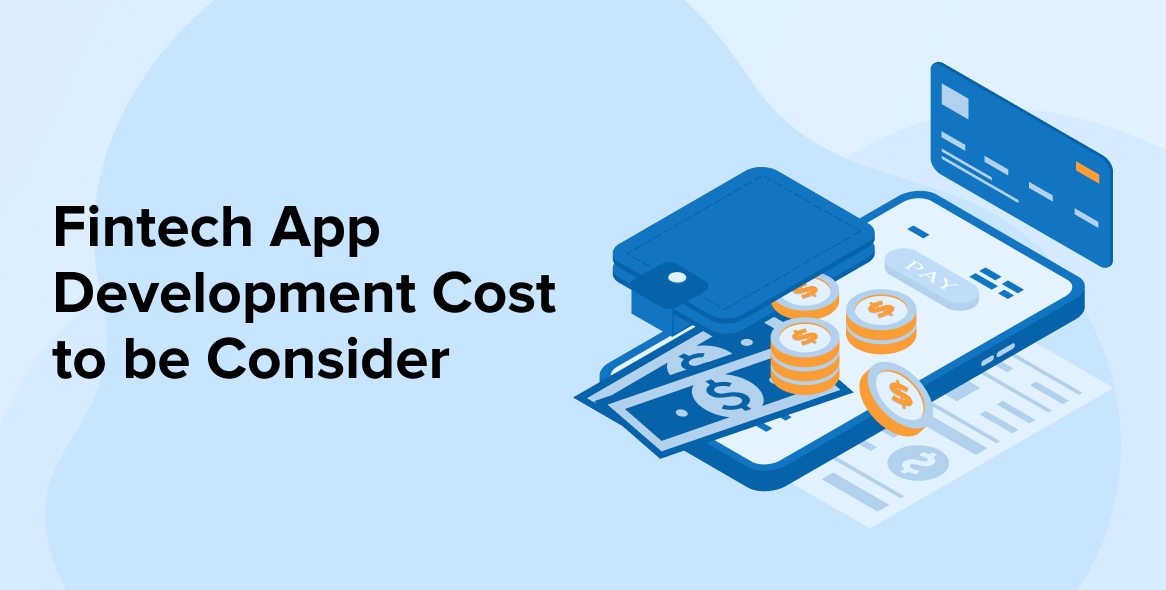
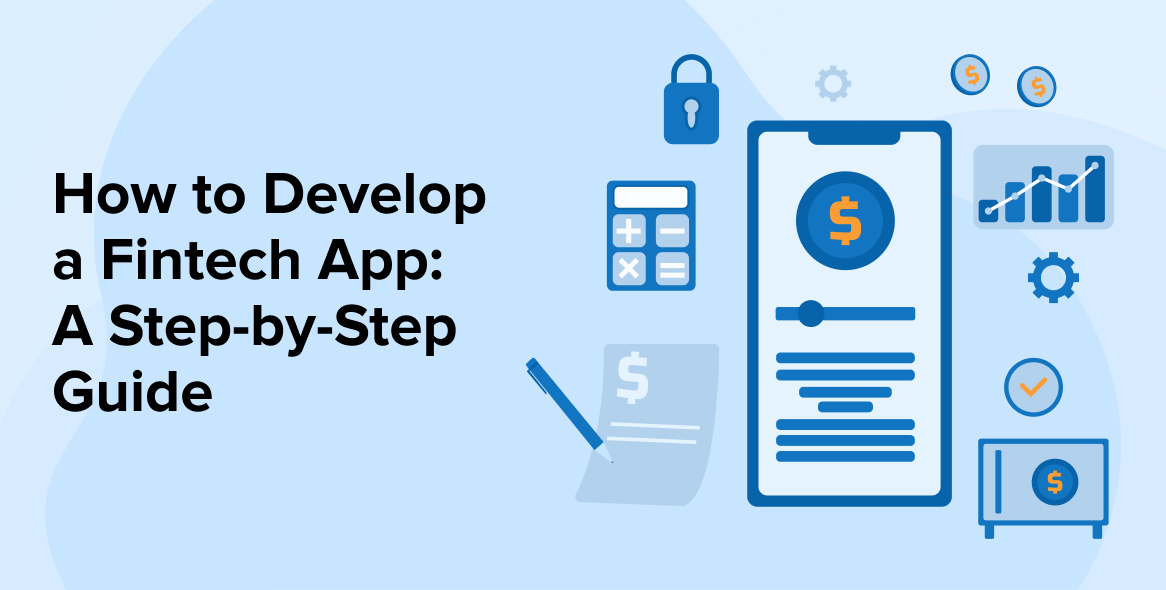
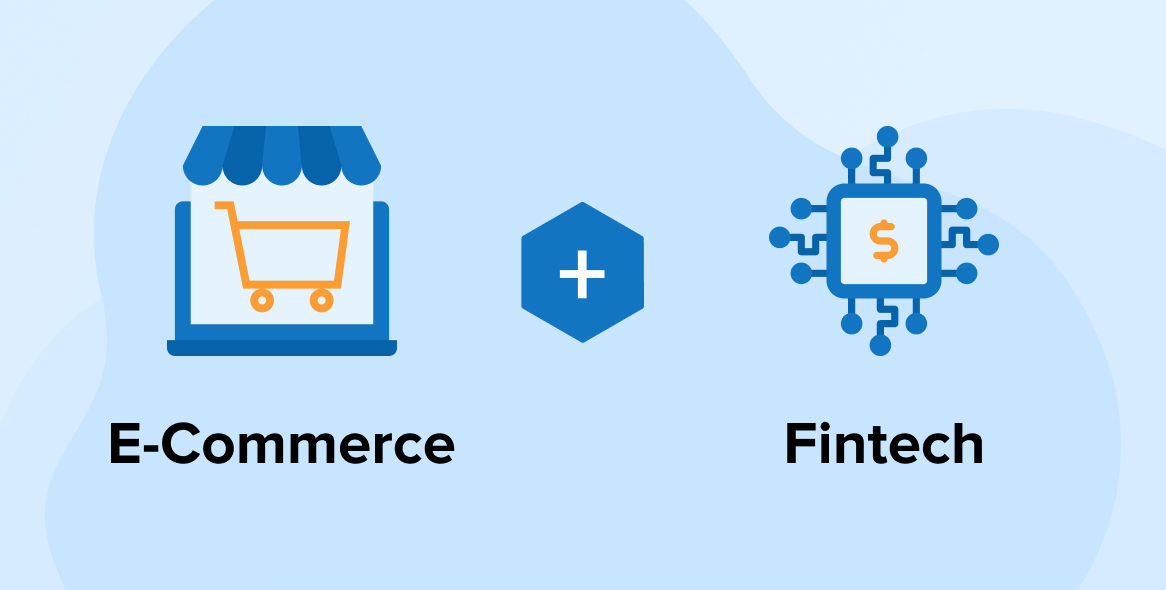

Comments
Leave a message...